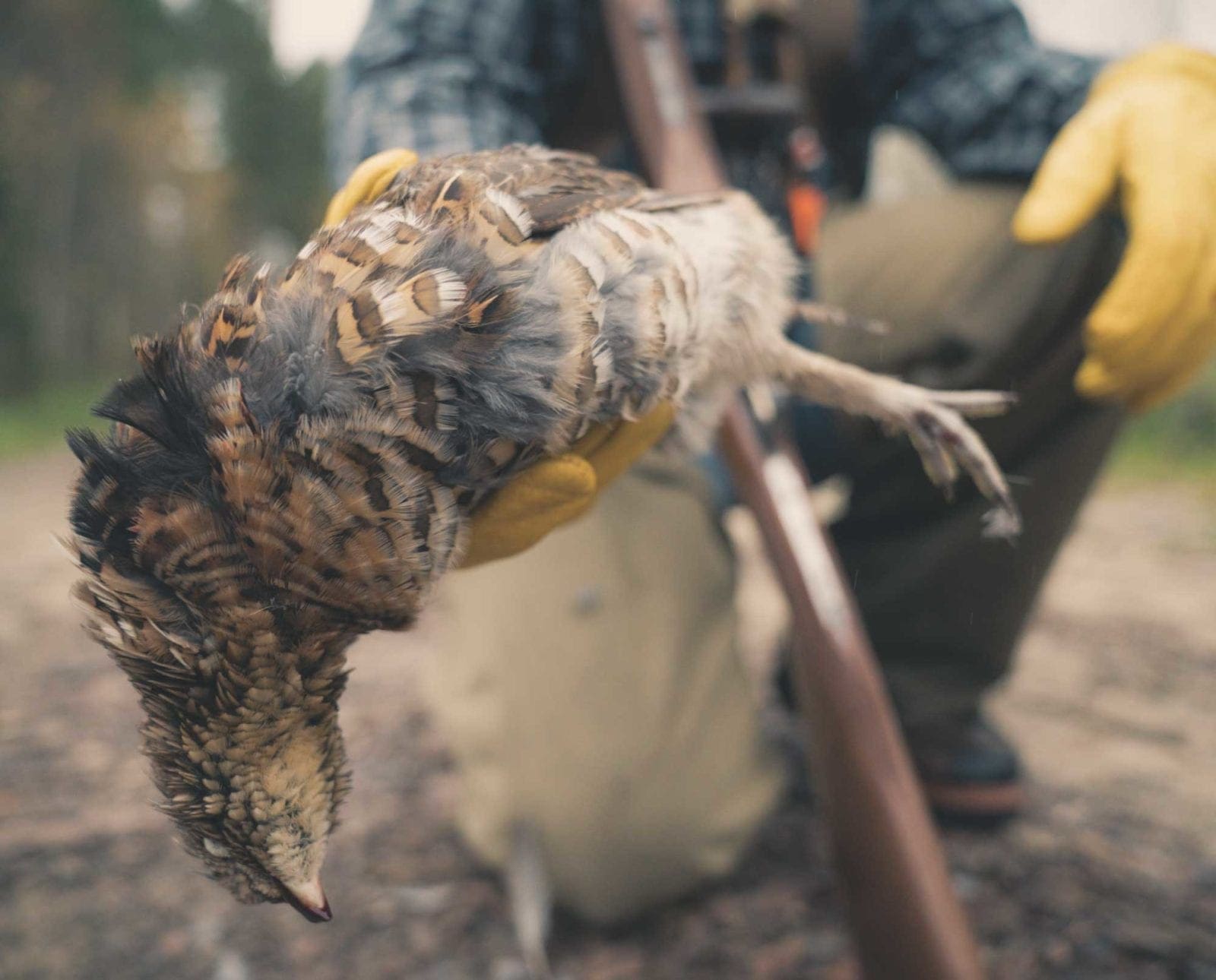Home » Hunting Culture » Grouse Hunting Should be on Everyone’s Bucket List
Grouse Hunting Should be on Everyone’s Bucket List

Project Upland is an editorial initiative to capture the cultures…
Hunting the “King of the Birds” is more than just another bird in the bag—it’s one-of-a-kind.
Bird hunting is a fine experience no matter what the quarry. From wild pheasant in the Midwest to the gentleman quail of the south, each offer a unique and different experience. The Ruffed Grouse or “King of the Birds” is certainly no exception. The settings, tactics, and difficultly level of grouse hunting leaves even the most seasoned hunter hungry for more punishment in the thick covers of the north woods. It is nostalgic even to those not from the old logging countries they inhabit. The first point, first flush, and first harvest ingrains a permanent memory of grouse hunting for years to come. If there were ever a bird worth a hunting trip and journey, it is Ruffed Grouse hunting that stands out.
Ruffed Grouse inhabit many states. The most known for grouse hunting is Minnesota, Wisconsin, Michigan and Maine. Plenty of sleeper states lie in between like New Hampshire, New York, Pennsylvania, and West Virginia. The spread of this north country habitat is in reach for many hunters from the west, midwest, and south. Note that Ruffed Grouse exist all the way down the Appalachian Mountains all the way to Georgia. Cabins, campgrounds, and outfitters are all realistic prospects. It is a public land sport for the most part. State lands make up a large share of the pie. The rest of it is mostly publicly accessible private logging land that is just as big as public owned property.
The bird itself is a wiry on that runs around on the ground and (unless we’re lucky) flushes at about 40 yards out. Part of the reason most grouse hunting involves counting flushes rather than harvests is that they challenge the most seasoned dogs. They have a way of making the thick covers seem like a simple launch pad, despite the shield of trees that swallow our reins of lead leaving them untouched. Let us not forget the thunderous sound of their flush that makes the steadiest of hands jump at the most unexpected moments.
The settings for grouse hunting are very different from the rest of the country. The upper Midwest provides a deceiving maze of aspen that make a compass more important than ever before. Under the canopy, the high ferns seem like the set of a Jurassic park film. The hardest part is not how to find a cover, but how to pick which cover to hunt first.
The northeast seems to be straight up mountains both ways with abandoned apple trees and rock walls in what seems like the most alien of places. Maine grouse covers look more like a walk into a dark forest from an old fantasy story. It’s enough to make you rethink how much you can trust your GPS. But all the exhaustion is worth the view from the side of a mountain—without a single paved road to ruin the scene.
After the self-inflicted torture of thorns that scar up arms and the piles of empty shell casings with few birds to show for, the aftermath sings to a more primitive side of our souls. The primitive attraction to overcome failure, to make our dogs better, to succeed against Mother Natures “King of the Birds”. We find that the Ruffed Grouse becomes a piece of us, calling us back in our dreams. The sound of chainsaws in the distance, the forgotten trout holes deep in forests, and that flush that will forever haunt our souls are all the small pieces that make up the nostalgic painting known as grouse hunting.
For anyone willing to take up the adventure of grouse hunting, please reach out to others. Many are willing to help on this journey as well as organizations like the Ruffed Grouse Society. Also check out more about grouse hunting in our bird hunting videos and blogs!
Project Upland is an editorial initiative to capture the cultures and traditions of upland bird hunting. We seek to inspire a future generation of upland bird hunters to understand the essence of hunting traditions and the critical cause for conservation.



